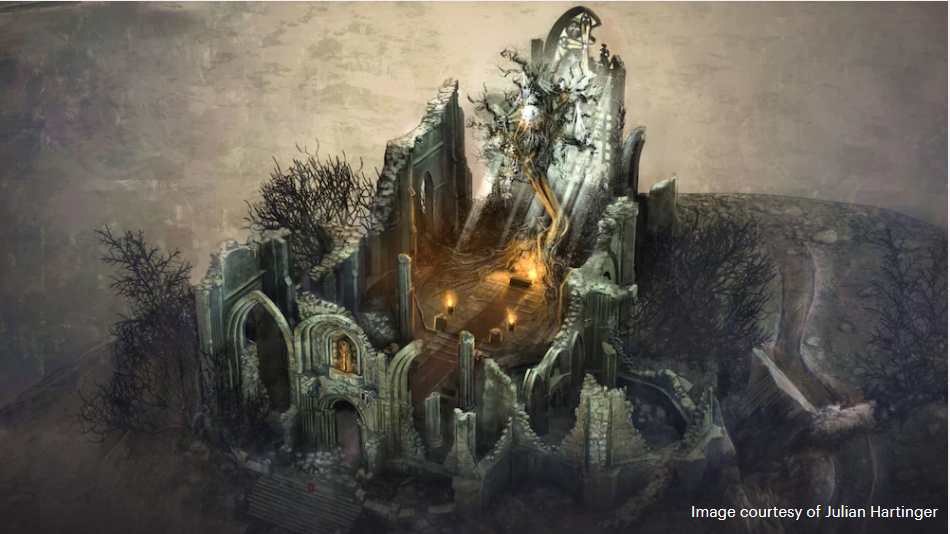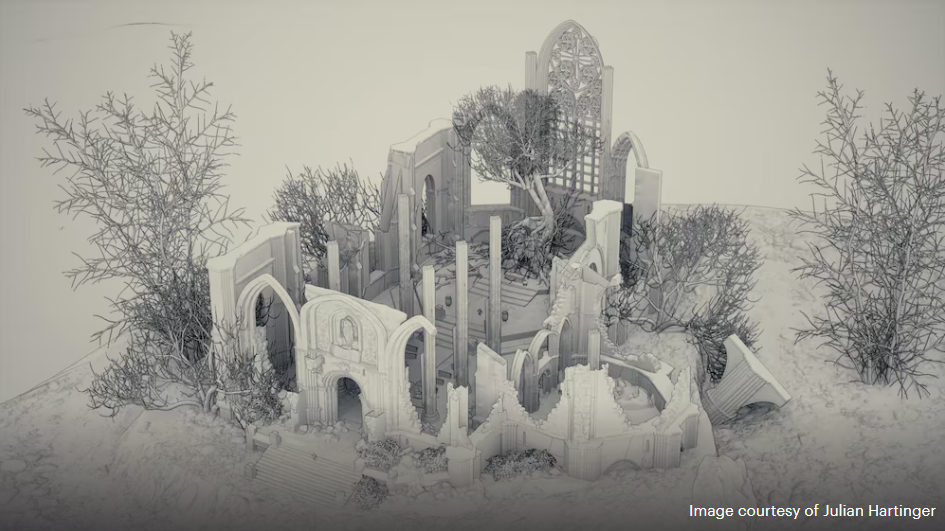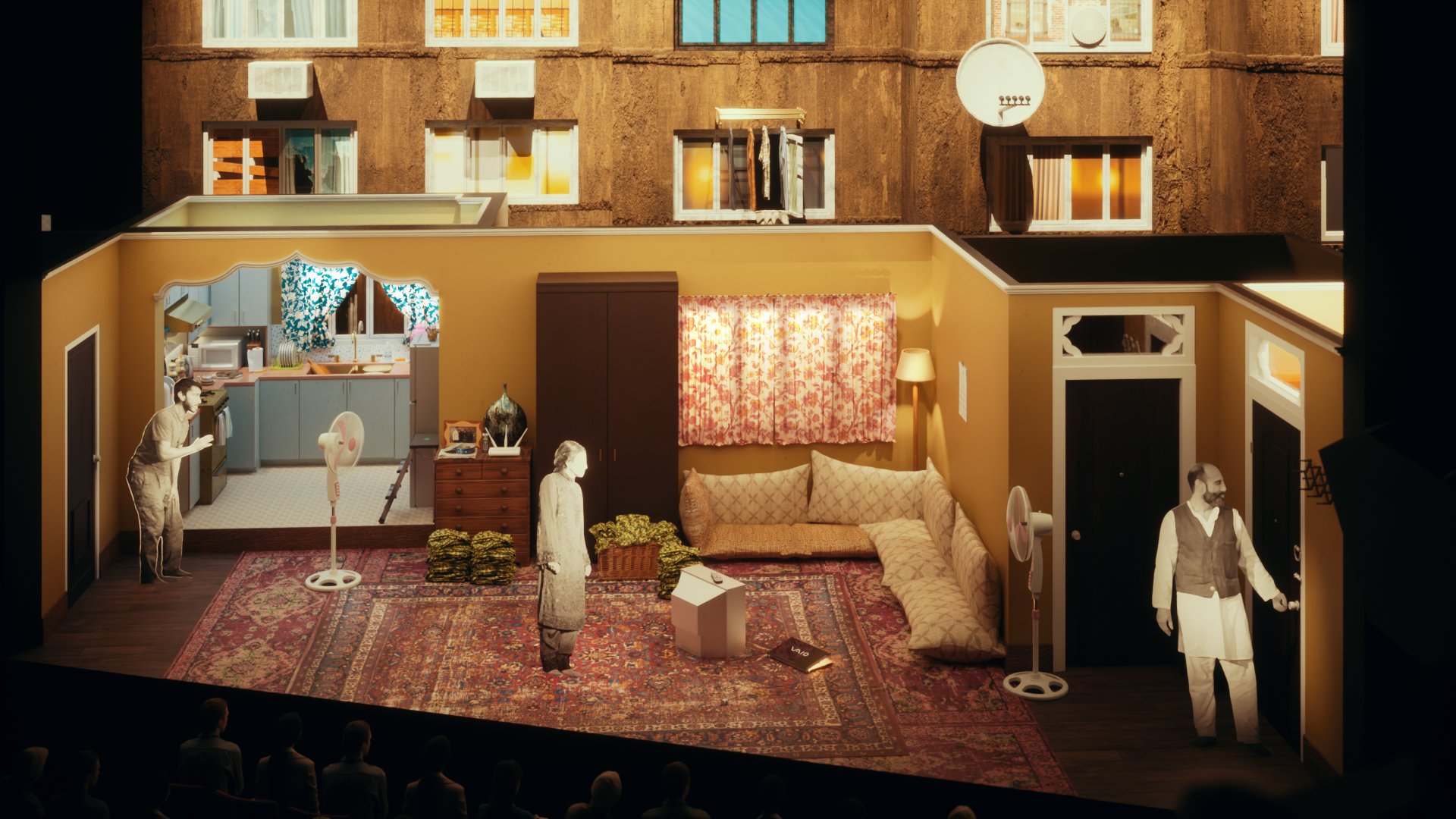Twinmotion: A New Face in the Design Rendering Game
December 15, 2023
Creating strong renderings is the bread and butter of any designer. As a scenic designer myself, in a world where scale models are becoming less and less common, creating the perfect render has become more important with each contract I take. I’ve worked with enough directors who have told me they struggle to visualize a three dimensional space from a two dimensional drawing to know that any tool that makes that process easier on them is worth its weight in gold. After all, scenic and costume renderings are as much a communication tool as they are works of art, and in most cases, the communication is more important than any artistic sensibility I might have.
I’ve added several programs to my rendering tool box over the years. SketchUp extensions like Podium, and Thea Render have their ups and downs. I tend to use Capture the most to light my digital models, though that still requires a SketchUp subscription. Classic Photoshop renderings and drawings can usually get the job done, but they tend to take longer than a few clicks to make. On my hunt for the perfect tool, I stumbled across a newer software that has been making waves in the world of architecture. It was released all the way back in 2005, but many users didn't hear about it until very recently.
What is Twinmotion?
Twinmotion is a rendering software that allows users to create 3D visuals in real time. Models can be imported into the software and then edited. The program is compatible with numerous softwares, including Allplan, Archicad, AutoCAD, BriscCAD, Revit, Rhino, RIKCAD, SketchUp Pro, SOLIDWORKS, and vectorworks - though you’ll need to be an experienced 3D drafter in these programs to find success. One feature of the software I was particularly excited about is the ability to create a direct link between it and most drafting software, so any changes you make in Revit, for example, will be sent directly to your project in Twinmotion with a simple click, without having to reupload the entire project. This is great for the design process, as we’re able to go back in and edit a file without having to relight the entire render.
The program also has over 700,000 pre existing assets you can drag and drop into your environment, similar to SketchUp’s warehouse feature. Additional free assets can also be imported from SketchFab. However, unlike SketchUp, which requires various extensions to allow for lit renderings, you can drag and drop both light sources and beams to alter the look of your rendering. Pre-existing lighting templates can be used to alter the designs with the click of a button. Various “decals” can also be used to edit surface textures in your model. Adding that peeling paint look you're hoping for is as easy as a drag and drop. Plus, all of the assets are interactable. Doors open, trees grow, and people and vehicles can walk along a predetermined path to add life to your model. We can literally show directors exactly where actors can walk on our stages by creating small animations in addition to still renderings.
The program can be used to create high-quality animations of any design, but it can also be used to create fully rendered plan views and section cuts. In the world of architecture, the program can show how a project might develop over time, animating the build of a space from start to finish. While I don’t see this feature being especially helpful in the world of theater, it’s a fun toy to play with. It’s especially impressive for outdoor renderings, as you are able to edit the time of day, weather, and season with one click.
The software is also equipped to export your work to a variety of places. Walk away with a high quality render saved on your computer, upload your work to the Twinmotion cloud, drop it into a VR space so you can walk around your design, or create an interactive 360 degree video or a panoramic photo. If you’re interested in the world of game development, designs can be bridged to Unreal Engine and used as environments there. Some artists have even used the program to create short films.


My Experience
A plethora of tutorials exist online, and I spent some time watching them and learning more about the program before I dove into it. I feel like I’ve yet to even scratch the surface on what the product is capable of. There are a few hours’ worth of tutorials, webinars, tips, and tricks on Twinmotion’s website, and even more available from other artists on Youtube. I only watched a few of the intro videos on the official website to start off with.
I’d love to say the program is easy to understand and intuitive, but to be frank there’s a steep learning curve here. I don’t blame the program for wanting to stand out, but even changing the camera view as you work is formatted differently than other programs I have worked in. Jumping between it and SketchUp, I constantly found myself rotating the camera when I meant to pan, for example. That being said, there are a LOT of material options, and I love not having to upload my own materials like I may have to in Capture or SketchUp. Materials can be edited fairly easily in the program. And the editing window is constantly in live mode, meaning I can see what the final render will look like as I work, unlike in programs like Podium or Thea where it’s a bit of a mystery until you hit that render button.
The thing I was most confused about was how exactly Twinmotion determines what the layer groupings are when an outside model is imported. I’m a very tidy sketchup modeler; all of my objects are tagged and layered meticulously to allow for easy photoshop editing on exports. Twinmotion says it separates layers based on the object's material. However, when I uploaded a Sketchup model, it split everything into about 65 layers, seemingly without rhyme or reason. I’m sure this is due to an existing setting I haven’t found yet, but I’d be interested to learn more about cleaning up digital models to make life easier as I’m building a render.
I’d love to show you some examples of finished renderings I made, but truthfully I’m far from developing anything worth seeing in the program after a day or so of playing with it. That being said, the finished products I’ve seen are incredibly impressive. I’ve included some work by other artists so you can see what this program is capable of in more experienced hands. While my Macbook Pro definitely protested as the program was booting up, it seems to handle the running of the program well. The live view was a little muddled at certain points, but in general it seems like a decent laptop will be able to run the program easily. The program depends on your graphics card, so as long as you have a strong GPU, you’ll be fine.
In general, I’m eager to learn more about the software. Thankfully, USITT is offering a four-hour Professional Development Workshop (PDW) on the software on Wednesday, March 20 at their Conference in 2024 that I’m eager to sign up for. The class is $80, and can be tacked on to your regular Conference registration. It promises to give an overview of the software, and to teach you how to troubleshoot as you go. After trying it this week, I have a list of questions I’d like to have answered at the workshop.
On Twinmotion’s official website, they’ve already called attention to theater artists using their software to create scenic renderings. See Raha Rodrigez’s work with the software here:

The Final Verdict
Altogether, I definitely recommend setting aside some time to explore the program. Staying up to date with new technology is a big part of our job, as designers, and though it’s quite easy to get stuck doing things the same way perpetually, adding new tools to your toolbox is always helpful. There is a free community version available that anyone can use and play with as they’d like. They also offer a free education license for students. To use the product commercially, it’s $749, which is a pretty large price tag, especially compared to the cost of Capture’s Solo subscription ($435, and I find the single universe is plenty for scenic design renders), or Podium ($249), but Twinmotion is capable of so many extra effects in the right hands that it seems to justify the cost. It’s likely outside the financial scope of an early-career designer, but those who have been in the game for a while might want to make the investment. Especially since the license is perpetual, and not one that needs to be renewed every year. The purchase of a license comes with free software updates for a year. From then on, upgrades will cost around $199. I’m sure as time goes on, it will become a flashy new toy in the hands of theater designers that are eager to use modern day tools to showcase their work.
I’ll likely hold off on adding it to my official arsenal until I sit in on USITT’s PDW this spring at USITT24, but I look forward to learning more about the program and watching it grow!
Click here to register for USITT24 and add the Twinmotion PDW to your registration!